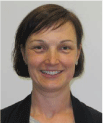Optimising value in the mature Turrum Field: integrating modern seismic, high-resolution sequence stratigraphy and production data in a 3D geological model
Natalie Debenham A * , Adam Fynnaart A , Melanie Ryan A and Angus Goody BA Esso Australia Pty Ltd, Melbourne, Vic., Australia.
B BHP Petroleum Pty Ltd, Perth, WA, Australia.
The APPEA Journal 62 S416-S420 https://doi.org/10.1071/AJ21096
Accepted: 23 February 2022 Published: 13 May 2022
© 2022 The Author(s) (or their employer(s)). Published by CSIRO Publishing on behalf of APPEA.
Abstract
The Turrum Field in the offshore Gippsland Basin has been a significant producing field since first development in 2004 and remains a keystone gas resource for the future as many of the Gippsland assets continue to deplete. The Turrum Field is a faulted anticlinal structure with multiple, stacked, Paleocene-aged fluvial to lagoonal reservoirs that stratigraphically sit below the overlying Marlin Field gas cap. This field was developed in two phases with drilling campaigns in 2004 and 2015 and includes a dedicated platform (Marlin B) for the higher pressure, higher CO2 gas. Leveraging the 2018 reprocessed Northern Margins 3D seismic survey with a modern broadband processing workflow and wider bandwidth and higher signal-to-noise ratio has led to a seismic image with greater resolution and allowed improved reservoir characterisation. The uplift in seismic data together with the colour blending capabilities in GeoTeric®, has led to the seismic identification of large-scale fluvial reservoir systems. These products have been integrated with a revised field-wide sequence stratigraphic framework, petrophysical analysis and incorporated into a full-field 3D geological model of the Turrum Field. The resultant geological model has improved our understanding of reservoir connectivity and will enable rapid integration of production and surveillance data to optimise gas deliverability. This will also provide increased confidence for future field depletion planning including the identification of potential bypassed gas opportunities prior to end of field life.
Keywords: field optimisation, geological model, Gippsland Basin, Paleocene, reservoir characterisation, seismic, sequence stratigraphy, Turrum Field.

Natalie Debenham graduated from the Australian School of Petroleum at the University of Adelaide in 2019 with a PhD in structural geology and petroleum geoscience. Prior to this, Natalie completed a BSc (Hons) at the University of Adelaide in 2014 and MRes at Macquarie University in 2015. Natalie joined Esso Australia in 2019 and is currently working in the Gippsland Basin Production Team as a geoscientist for the Turrum and Marlin fields. Natalie’s interests include reservoir characterisation and structural geology. |

Adam Fynnaart graduated from the University of South Australia in 2001 and Adelaide University’s National Centre for Petroleum Geology and Geophysics with a BSc (Hons) in Petroleum Geology in 2002. Adam joined Esso Australia in 2003 and has worked in various exploration and production roles across the Gippsland Basin, Carnarvon Basin, Papua New Guinea and the Sandakan (Sulu Sea) Basin in the Philippines. Adam is currently working as a senior production geoscientist in the Gippsland Basin Production Team and is the lead geoscientist for the Turrum Field. Adam’s interests include seismic interpretation, basin and field scale stratigraphy, volumetric risking and assessment and the integration of subsurface and production datasets. |

Melanie Ryan graduated from the University of Adelaide with a BSc (Hons) in Geology. She joined Esso Australia in 2001 and has worked in various development and production roles across the Gippsland Basin, Malay Basin, North West Shelf and Papua New Guinea. Melanie is currently working as the Supervisor of the Gippsland Basin Production Team. |

Angus Goody graduated from the Australian National University in 1991 with a BSc (Hons) in geology and geophysics. He joined BHP in 1992 as a geophysicist and has worked at BHP for 30 years on a variety of exploration, appraisal and development projects out of BHP’s Melbourne, London, Houston and Perth offices. He returned to Perth from Houston in 2018 as a geophysicist in BHP’s Australia Production Unit. He has been working predominantly on the Gippsland Basin since 2018. Member: PESA, GSA, PESGB, EAGE and ASEG. |


